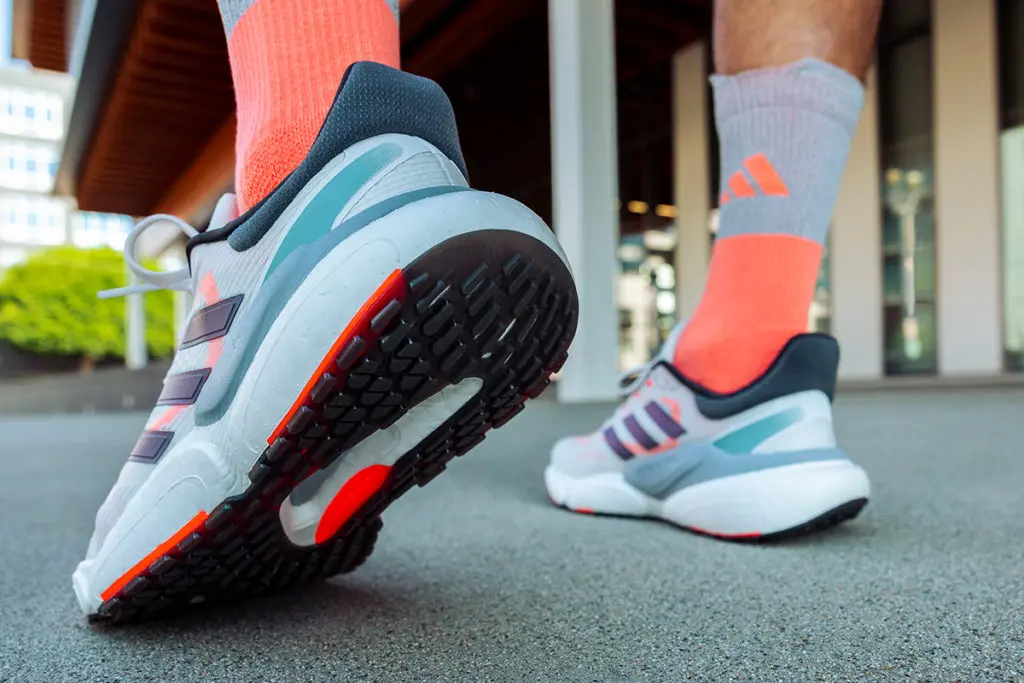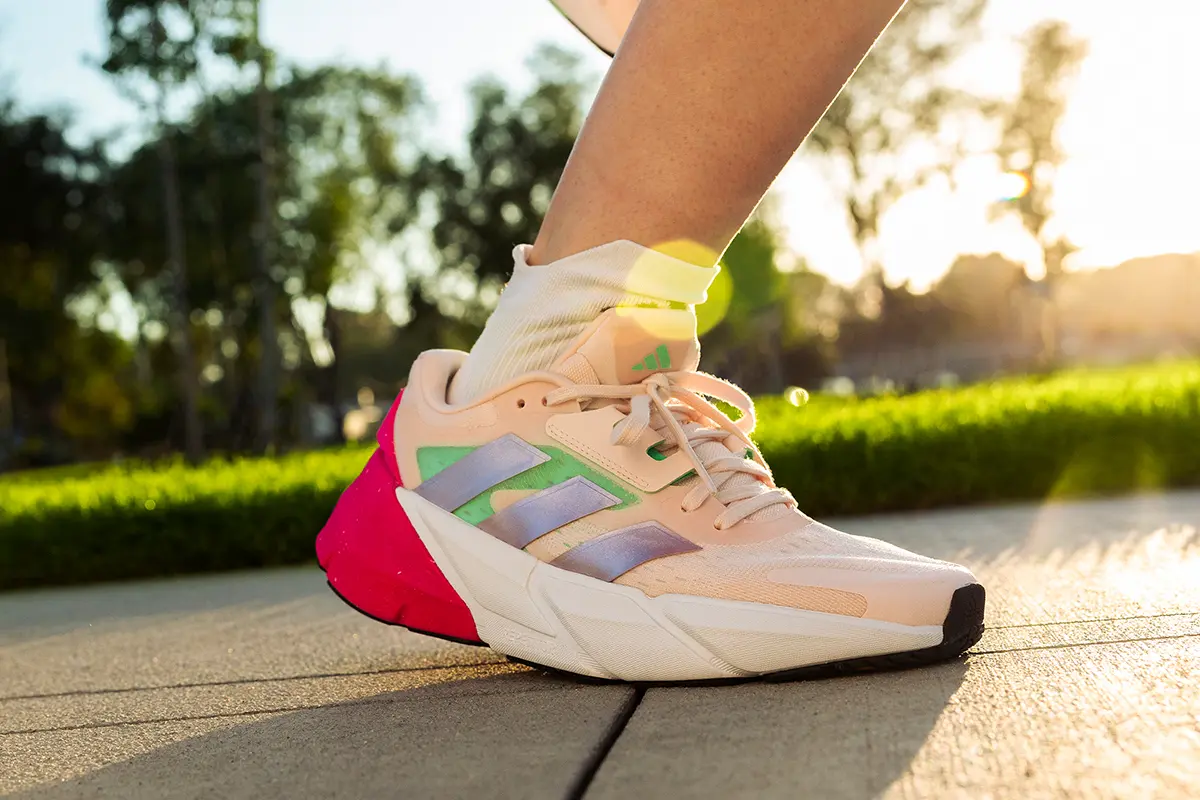PRONATION: WHY IT’S IMPORTANT, AND HOW TO CORRECT DEVIATIONS

It’s easy to get confused when you search for the word ‘pronation’. You can both overpronate and underpronate. Even your hands can pronate. Pronation is associated with barefoot tribes, ultra-athletes and flat feet. Is pronation good or bad for you? This article will explain what pronation means and how it affects your running.
What is PRONATION?
The opposite movement is known as supination. Supination is the opposite of pronation. 1 2
Pronation is the rolling of the foot at its ankle, so that the weight is transferred to the inside edge (the side of the big toe). Imagine your ankle pressing inward.
When the foot rolls the other way, the weight is transferred to the outside edge (the side of the little toe). Imagine your ankle pushing forward.
Try shifting your weight left to right while standing on one foot. Your foot pronates or supinates as it rolls to keep balance.
Pronation may have a negative connotation, but a certain amount of pronation when walking or running is healthy. Pronation can cause foot problems only if it is excessive or insufficient. Pronation that is too little (under) or excessive (over) can be detrimental to the health of your joints and performance when you run.
Pronation, like so many other things, is best done in moderation. neutral is a pronation style that improves running performance and shock absorption as part of an organic running style.

NEUTRAL PRENATION
The outside edge of our foot will hit the ground first in neutral pronation.
The foot at this point is neutral – not pronated or supinated, but flat on the ground.
The movement from a supinated to neutral position in mid-stance, which occurs when the foot makes contact with the ground, is part of a normal gait cycle. Neutral pronation is essential for shock absorption when running.
OVERPRONATION
Some people have a foot that rotates too much outward. Overpronation is more common than the opposite, underpronation. Overpronation is excessive or overpronation and transfers weight to the inner edge of the foot including the big toe. Overpronation causes the arch to flatten as the foot rotates inward. This can lead to or worsen flatfootedness over time. It affects the weight transfer, balance and power transfer when toeing off.
Overpronation increases the risk of Plantar Fasciitis, which is pain and inflammation along the band that runs from the heel to the front foot. The tibialis posterior is more stressed by a flatter foot. This muscle can be strained and cause shinsplints. Overpronation can also affect the rotation of the tibia, which can lead to different types of knee injuries.
UNDERPRONATION
Underpronators are also called “supinators.” They rotate their feet inward, putting pressure on the outer edge (little toe) of the foot. Underpronating runners usually have a high arch.
Underpronation has the disadvantage that forces aren’t distributed evenly across the entire foot-on-ground surface as they would be with neutral pronation. The ground contact force is absorbed by weaker and smaller structures of the foot such as the littletoe. This running gait increases the strain on the plantar facia, the tibia and the knee.
HOW DO I KNOW IF I OVERPRONATE OR UNDERPRONATE (SUPINATE)?
Here’s the big question. What is my foot style? What is my foot type? Here are two easy ways to determine if you pronate too much or too little.
THE WET FOOTPRINT TEST
Wet feet can be used to walk across a dry, flat surface. This can be done with dry concrete or cardboard. Your footprints will show you which parts of your feet are in contact with the ground. Overpronation or flatfeetness is indicated by a broad/oval footprint with no dry area at the arch.
The footprint will show a curving connection between the ball and heel of the foot. This indicates neutral/normal pronation with a normal arched.
The footprint will show a low arch and little or no connection between forefoot and heel. This indicates that the underpronation is high.
The WEAR and TEAR Test
Check the wear on your shoe soles to see if you are under- or overpronating.
Overpronation is indicated by the wear on the inner edge of the heel, and the big toe. Supination or underpronation is indicated by wear on the outside of the foot, from the heel to the little toe. Wear in the shape of an s is seen from the heel to the toe for neutral pronation.
Running Gait Analysis
Professional gait analysis will give you the most accurate feedback on your pronation when running. The most common way to perform a running gait analysis involves slow-motion video of treadmill runners from various angles. To provide accurate data, motion analysis software calculates joint angles and distances.
Gait analysis, which is usually included in shoe fittings for free, can help you improve your running technique.
*Tip:
Video analysis apps can help you perform your own gait analyses. However, it is important to confirm your findings with a professional prior to making any major changes.
How do I correct OVERPRONATION or UNDERPRONATION?
Most cases of over- or under-pronation can easily be corrected without invasive surgery.
Neutral pronation can be achieved by wearing shoes that have arch support. There are many shoe inserts and insoles available to correct pronation. They can reduce pain and improve the alignment of the heel when you walk and run. The use of Kinesiology Tape to brace the feet is another effective way to control foot pronation.
By strengthening the arch, simple foot strengthening exercises can correct overpronation. Use the following exercises as part of your regular training.
FOOT FLEXES
“Crush”, or flex the foot to bring toes and heels together. Hold this position in place for two seconds. Repeat this for eight repetitions.
CALF RAISES
Raise your heels from the floor and hold them for two seconds. Repeat this exercise for eight repetitions.
In severe cases of overpronation or flatfootedness, custom orthotics may be required, along with pain medication, physical therapy and ice. Surgery is a last option. If you’ve had chronic foot problems or if scar tissue and injury have restricted your mobility, this may be the case.
Which shoes are best for overpinning and underpinning (Supination)?
The choice of shoe is important to runners. Running shoes can be blamed for both poor performance and injuries, as well as success and healing. Barefoot evangelists promote zero cushioning, ‘natural’ techniques and zero padding. Podiatrists recommend arch support and orthotics. Both agree that neutral pronation reduces pain, injuries, and improves performance.
Wearing shoes that encourage neutral pronation can be a popular way to achieve it. They usually have motion control features like arch support that prevents overpronation, or lateral support that prevents underpronation.
In some studies, injury rates were reduced(3 4), while in others they remained unchanged(5,6) or even increased. In some studies, the injury rate was reduced (3 4), but in others it was unchanged (5,6) or even increased.
Some people criticize supportive, cushioned shoes for reducing sensitivity to running surfaces and sapping the strength of the foot because they provide support instead of bone, muscle, and connective tissues. It is not a good idea from the perspective of injury prevention.
Run barefoot is another alternative. This will help to strengthen the arch and correct the overpronation. There is little evidence that this leads to fewer injuries.
There is no doubt that the relationship between performance and injury are complex. Pronation problems are not a ‘one size fits all’ problem. There is no ‘comfort-filter’.
Recent research suggests that runners choose footwear based on comfort to prevent injury and improve performance. ( 7 )Afterall, discomfort is an indicator when something’s not right.
Choose shoes that are comfortable and allow you to feel the surface of your running shoe.

